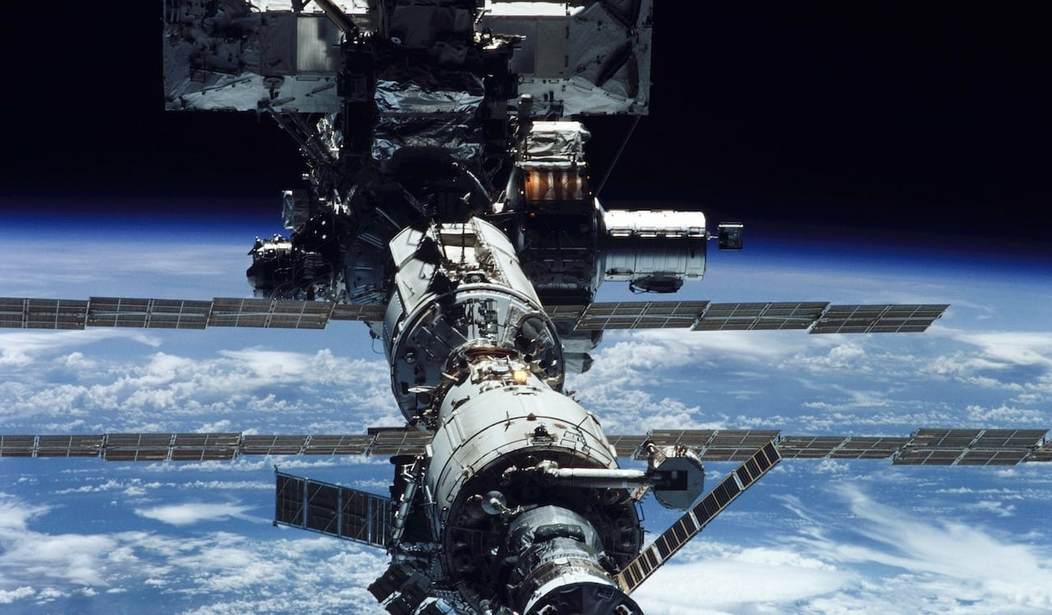A Lonely Place at the Edge of the Map
There's an area on this planet that's so remote that orbiting astronauts are closer to civilization than anybody would be at that point.
It's called Point Nemo, which sits in the South Pacific and is 1,670 miles from the nearest landmass. It's not where the cool kids, or any kids, hang out; sailors don't go there, trade routes avoid it, and nobody lives within radio range.
 Wikimedia Commons
Wikimedia Commons
If you need a definition of nowhere, here you go: It's the definition of nowhere. That's why it's a perfect place for the International Space Station to go to die.
Point Nemo has served as the watery grave for hundreds of spacecraft and satellites for decades, the "spacecraft cemetery" that was chosen precisely because there's nobody around to watch the fireworks.
Where Machines Go to Rest
Agencies have been steering decommissioned stations into that silent patch of ocean since the 1970s. The Soviet MIR station made the trip in 2001, as molten debris scattered across the waves before vanishing beneath them. Cargo ships, weather satellites, and even Skylab fragments were all nudged into orbits designed to decay until gravity took over.
Now, the most ambitious joint engineering project, the International Space Station (ISS), will follow a similar path sometime around 2030. It will descend in a controlled dive, entering our atmosphere at 17,000 mph, tearing apart due to temperatures hotter than a blast furnace, and finally splashing down near Point Nemo.
A Symbol of Human Reach and Regret
The descent contains a sense of poetry; the station has circled the Earth for more than two decades and, despite political fractures below, it was a laboratory where Americans and Russians still cooperated. It marks not only the end of a space exploration chapter, but also the start of a new era, dominated by private industry, leaner designs, and shorter lifespans.
Cutting deeper is the symbolism that humanity built something to live among the stars, and then chose to bury it in the most distant part of the ocean. It's half-triumph, half-confession; we dream big, but gravity binds us, despite our need to dump what we outgrow.
The Ocean’s Quiet Acceptance
Oceanographers call Point Nemo an "oceanic desert" because nutrients rarely circulate there, leaving the waters around it eerily still and devoid of marine life and making it one of the least biologically active regions on Earth.
Or put simply, a convenient landfill.
Despite best efforts, actions still have consequences. While re-entry burns up much of a spacecraft, scientists warn that what remains is still scattered: aluminum, titanium, and carbon composites across the seabed.
We're trading the effort to keep Earth's orbit clean for turning Earth's loneliest waters into a metallic junkyard.
A Lesson About Legacy
Despite time and conquerors, every civilization leaves remains; the Romans left aqueducts, the Egyptians the pyramids, and our age will leave orbital debris and a GPS constellation, forming what’s known in aerospace terms as a constellation: the dozens of GPS satellites still ticking away above empty oceans working in sync.
Someday, Point Nemo might fascinate archaeologists the way ancient ruins do today, giving proof that we reached for the heavens and found the cleanup inconvenient.
There is something honest in the choice. We're not pretending to erase our footprint; we're acknowledging it. The oceans accept our fragments the way they have accepted shipwrecks for centuries, without mercy, ceremony, and complaint.
Final Thoughts
Somewhere above those silent coordinates, when the ISS meets its end, humanity will watch the sky glow faintly one more time before fading back into darkness. The news cycle won't be long, but it will mark an inflection point, reminding us that progress always has a price, and endings, like orbits, eventually decay.
The next generation of space stations will be built by corporations instead of coalitions, orbiting higher, smaller, and cheaper.
All of them share one inevitable destination; whether looking to the stars or down the abyss, Point Nemo patiently waits for the fall of the next traveler.










